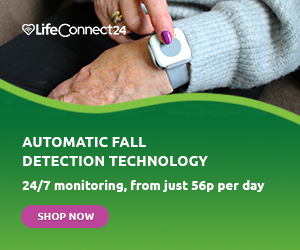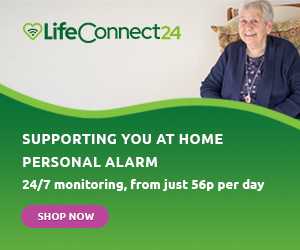Taking part in a Pilates session is great for your health and mental well-being. Today’s post will explain what exactly Pilates is, including its origins, and the health benefits it can have for older people.
What is Pilates?
Pilates is a fitness activity which focuses heavily on controlled breathing and the quality of movement, rather than the number of repetitions in a session. The aim here is to strengthen your body in an even way, focusing specifically on your core strength.
The exercise routine was created by Joseph Pilates, from Mönchengladbach, Germany, in the early 20th Century. He believed that mental and physical health were closely connected and went on to develop a system of exercises which were intended to strengthen your mind and body. The NHS shares more about his story:
Joseph’s method was influenced by western forms of exercise, including gymnastics, boxing and Greco-Roman wrestling. Pilates immigrated to the US in the 1920s and opened a studio in New York, where he taught his method – which he called contrology – for several decades.”
Since then, there have been several different types of Pilate exercises. The majority of these exercises are based on up to nine principles, six of which were outlined by Frank Philip Friedman and Gail Eisen, students of Romana Kryzanowska – who was taught by Joseph Pilates.
The nine principles are as follows:
- Breathing.
- Concentration.
- Control.
- Centering.
- Flow.
- Postural Alignment.
- Precision.
- Relaxation.
- Stamina.
Apparatus and Mat Work
Pilates exercises can be done on a mat or by using special apparatus, such as Reformer, and Wunda Chair. The Reformer was created by Joseph Pilates and is a bed-like frame which includes a flat platform, known as the carriage, that rolls back and forth.
The carriage is attached to one end of the reformer by a set of springs. The springs provide choices of differing levels of resistance as the carriage is pushed or pulled along the frame. With this form of apparatus, exercises can be done lying down, sitting, standing, pulling the straps and pushing the footbar – just to name a few examples. Please see the video below to see a Pilates Reformer in action:
The Wunda Chair was also created by Joseph Pilates and is a resistance exercise machine. This chair is essentially a box with one side that can be pressed down against the resistance of the springs, like a large pedal. Sometimes the pedal portion is divided into two parts that can be worked independently.
This device is excellent for the strengthening of your core muscles and exercises can be done whilst laying down, sitting and standing on the chair. Please see the video below for some examples of the exercises that you can do using this equipment.
Of course, you don’t have to use any apparatus – you can just use an exercise mat to do your Pilates routine. Of the 500+ exercises that were devised by Joseph Pilates, 34 of them were mat exercises.
Exercising on the mat is a great way of stretching and strengthening your core muscles. The Livestrong website explains:
Mat Pilates borrows from disciplines such as dance, yoga and classic calisthenics. The standard Pilates system of exercise uses many different pieces of equipment, such as the reformer, cadillac and barrel. But, the mat Pilates series of exercise is performed equipment-free, with the moves adapted to work with just your body and a floor mat for cushioning and support.”
Example Routines on the Mat
Mat work may involve traditional Pilates equipment such as magic circles or hand weights, as well as non-Pilates gear such as stretch bands, gym balls and foam rollers. The Livestrong website also shares a few examples of the types of exercises you’ll be doing in your class:
- Hundred – Lie on your back on a mat and draw your navel in to press your spine toward the floor. Extend your arms alongside your hips. Lift your legs up straight up the ceiling and then lower them to create about a 45-degree angle with the floor. Raise your head, neck and backs of the shoulders off the floor and elevate your arms several inches. Inhale briskly through your nose and exhale through your mouth as you pump your arms in conjunction with the breath.
- Leg Circles – Lie on your back with your arms planted in the floor alongside your hips. Reach your right leg up to the ceiling. Leave the left leg long on the mat or bend your knee and plant your foot if your back arches when your leg is straight. Point your right toe and, pretending it’s like the tip of a pencil, draw five to eight precise circles to the right. Switch directions and draw five to eight circles to the left. Repeat the circles on the left.
- Ab Series: The ab series consists of the single-leg stretch, the double-leg stretch, the single straight-leg stretch, the double straight-leg stretch and the criss-cross.
Each class and instructor will perform different exercises each week, depending on your experience levels.
Difference between Pilates and Yoga?
The main difference between Yoga and Pilates is that the former focuses more on relaxation and uses meditation throughout the exercise. Yoga also doesn’t require any equipment and Pilates is performed in a flow of movement without the static poses associated with yoga.
What are the benefits?
There is a large debate over the official benefits of Pilates, however practitioners believe that this form of exercise can help to improve your posture, muscle tone, balance and joint mobility. Keeping your balance and co-ordination can become a struggle the older you get, so training in this way could be a huge help. Of course, having good balance in old age can reduce the risk of a fall at home.
Keeping your joints healthy will also allow you to keep on having an active lifestyle, rather than being confined to your living room all day. This in-turn helps to keep you socially active, which is great for your mental well-being, and will also help you to remain at a healthy weight. Pilates has also been found to relive stress and tension.
There’s some evidence that Pilates can provide pain relief to people with non-specific lower back pain. The use of apparatus enables someone with back pain to perform exercises with support. However, for the exercises to be effective, they need to be tailored to the individual and vetted by an appropriately qualified health professional. Pilates teachers are not medically qualified and cannot prescribe, treat or offer therapy.
Pilates can also help you to lose weight as it is a muscle-strengthening activity which focuses on your core. Of course, as with all forms of exercise, it is recommended that you combine Pilates with a healthy diet, as well as aerobic activities such as swimming and cycling.
Injuries are also quite rare given that this is a low-impact form of exercise. You do need to make sure that you have a qualified teacher and a class that is suitable to your level of fitness and ability – don’t go rushing into an experienced class.
- If Pilates isn’t for you, check out our Top 7 Sport and Fitness Activities post.
- Read our guide to guide to healthy living.
Personal Alarm Information
For more information about our life-saving personal alarm service, please get in touch with our friendly team on 0800 999 0400. Alternatively, complete our contact us form and we will get back to you as soon as possible.
Use the discount code BLOG2018 when you order one of our personal alarm on a Monthly or Annual Plan to receive £10 off.



Leave A Comment